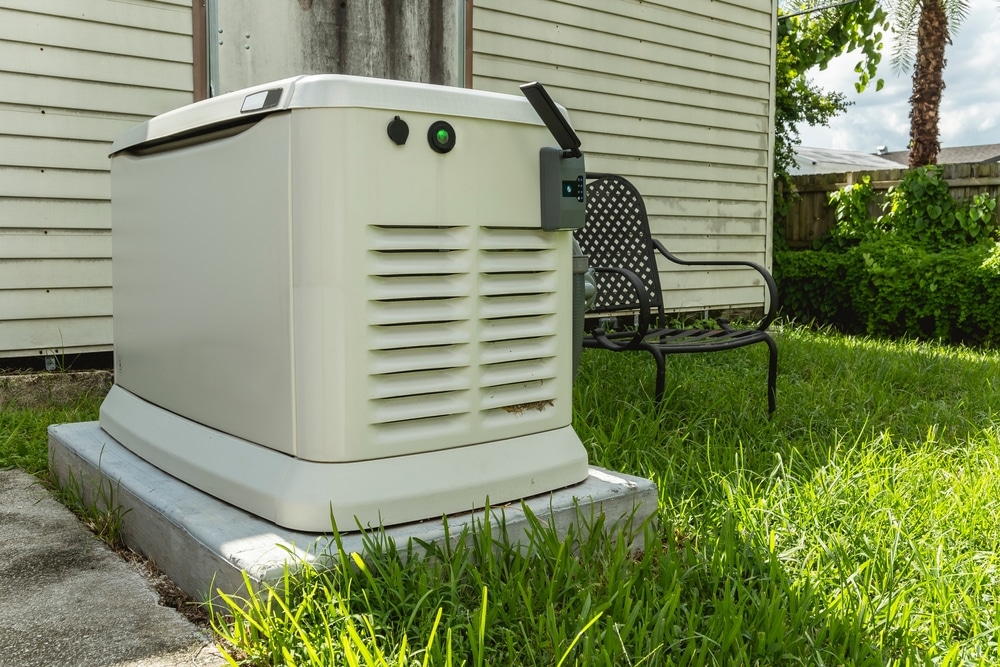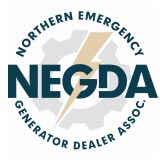
Extended or frequent power outages can leave your home without electricity for lighting, refrigeration, cooling, heating, and operating appliances. You can keep your lights on and other critical appliances running by investing in a properly sized generator.
In just seconds, a home generator automatically restores power, ensuring life goes on uninterrupted. Keep reading to learn more about what generator capacity means and how to pick the right capacity generator!

What Does Generator Capacity Mean?
Generator capacity is the maximum amount of power or electric energy a generator can produce. Capacity is measured in Watts (W).
If the figure is bigger than 1,000 watts, kilowatts (kW) are often used instead. 1kW=1,000 watts
How Do I Choose A Generator?
A home standby generator is a safety net when power goes out. It’s perfect if you’re searching for a comprehensive power solution for outages.
A generator can offer seamless power to your home through an automatic transfer switch. The generator is installed outside your house and can be fueled by propane, diesel fuel, or natural gas.
When selecting a generator for your home, you don’t want to choose one that’s too big or too small. You can overload your generator when it’s too small, forcing it to shut off or overheat.
Overheating can cause damage to the generator itself and even your costly devices. On the other hand, if the generator is too big, you’ll pay more for it and incur higher operating costs.
Although you shouldn’t select a generator that’s too large, you should choose one that’s a bit bigger than your needs. You want a generator that can handle the power needs of your home without using 100 percent of its wattage.
How Do I Know the Right Capacity Generator for My Home?
Generator sizing is based on watts. Therefore, you need a generator with enough wattage or power to run all the appliances and devices you want to keep going during an outage.
Here’s how to size a home generator:

Step 1
Begin by listing all the devices you want the generator to power if there’s an outage. This can include things like the lights, heating and cooling system, certain outlets, sump pump, TV, and refrigerator.
The more devices you want to use, the bigger your generator will be.
Step 2
Determine the wattage rating of every item on your list. The wattage is usually indicated on an information plate on the appliance itself or in the owner’s manual.
Many owner’s manuals are now on the internet, so you can check online if you don’t find them. If you only see volts and amps on the appliances, you can easily convert them to wattage by multiplying them together.
Volts × Amps=Watts
Step 3
Add up the wattage of all the devices on your list to determine the total power requirements. Running watts and starting watts are crucial in this calculation.
Running watts, also called continuous power or rated power, is the amount of electricity or power required to keep appliances operating normally once they’re turned on. Certain appliances, like refrigerators or air conditioners, require additional wattage or power to start up than they do once they’re running.
This is called starting watts, surge power, or peak power. On average, starting watts are usually two to three times higher than running watts.
Both the running and starting watts help determine the power your generator should provide. The table below shows an example of the running and starting watts of common household devices:
| Device | Running Watts | Starting Watts |
| Refrigerator | 180 | 1,800 |
| Air Conditioner-Small Window Mount | 1,200 | 8,000 |
| Television | 500 | 0 |
| ½ HP-Garage Door Opener | 875 | 2,350 |
| 1/3 HP-Sump Pump | 800 | 1,300 |
| Washing Machine | 1,300 | 2,300 |
| Dryer | 5,400 | 7,000 |
| Dish Washer | 1,300 | 1,800 |
| Vacuum | 1,440 | 2,500 |
| Clothing Iron | 1,500 | 0 |
To run all the equipment in this table from a generator, you need to calculate the power consumption of all these gadgets. Add up the running watts, which in the above example is 14,495 watts.
Then, add the highest starting watt to the total running watt to know the generator size you need. 14,495 watts + 8,000 watts = 22,495 watts.
The generator you select must supply both 22,495 watts of peak power and 14,495 watts of running power.
Step 4
Consider the 80 percent rule. When choosing and using a backup generator, bear in mind that most generators can only sustain 80 percent of their maximum power for extended periods.

If you constantly operate your generator at more than 80 percent of its capacity, you may overwork it, shortening its lifespan. So, add a 20 percent safety margin to the total power requirements.
In step 3, the starting watts was 22,495 watts, while the running watts was 14,495 watts. Thus, choose a generator with a starting watts rating of 27,000 watts and running watts of 17,000 watts.
This is the generator capacity needed for your home. The additional 20 percent will ensure you don’t push your generator too hard.
It’ll also future-proof your power needs–you may purchase new appliances or bigger gadgets down the road.
Do you want to learn more about the right capacity generator? Contact the professionals at Pow’r Point Generators in Saco, ME, today!





